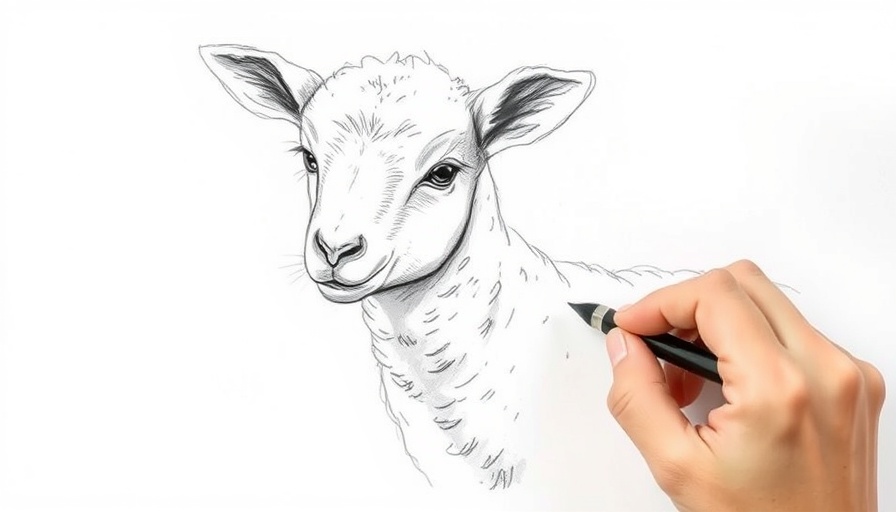
Stepping into a New Reality: Understanding Jesus' Last Week
In a captivating blend of technology and spirituality, the BibleProject ventures into the world of virtual reality with their immersive short film, Last Week of a King. This exciting exploration allows viewers to experience the final week of Jesus Christ leading up to his crucifixion, blending historical events with modern storytelling tools. For church communities, especially among members of the Seventh-day Adventist faith, this approach presents a unique opportunity to engage deeply with biblical narratives.
In Last Week of a King: A VR Short, the discussion dives into how technology can enhance our understanding of biblical stories, exploring key insights that sparked deeper analysis on our end.
Reimagining Scripture through Virtual Reality
The use of virtual and augmented reality creates a dynamic environment to explore sacred stories. Imagine a church service where congregants can don VR headsets and witness Jesus' triumphant entry into Jerusalem, feeling the palpable excitement of the crowd as they shout, "Blessed is he who comes in the name of the Lord." This technology blends education with an emotional experience, allowing users to interact with the biblical story in a profound way.
VR also serves to reinforce a deeper understanding of Scripture. The imagery and emotional cues can help believers reflect on Jesus' heartache as he foresaw the rejection he would face. How moving would it be to feel that weight of sorrow during an interactive session?
The Importance of Context in Jesus' Journey
In the VR experience, viewers encounter a historic context that enriches their understanding. Jesus entering Jerusalem on a donkey is not just a moment; it's a fulfillment of prophecy, a ceremonial act laden with meaning. This exploration can spark conversations in family and faith groups, bridging generational gaps by encouraging discussions about ancient texts and their relevance today.
For instance, why did Jesus choose a donkey over a horse, a symbol of power? This deliberate action invites reflection on humility and service, resonating with Adventist values that emphasize the importance of servant leadership.
A Call to Action: Embracing a Christ-Centered Life
As Jesus enacted his mission in the temple, driving out money changers to defend the sanctity of worship, he challenged the status quo. This aspect of the narrative encourages members of the faith community to examine their own lives and actions. Are we, too, considering the ways we may be neglecting our commitment to God’s kingdom?
Moreover, the film presents a pivotal moment during Passover where Jesus shares his Last Supper with disciples, offering insights into self-sacrifice and love. These teachings encourage believers to embody the principles of love and service within their communities. The connection between the Last Supper and the sacrificial love Jesus showed can serve as a guiding principle as community members strive to live out their faith.
Connecting with the Community
As the Seventh-day Adventist community navigates modern challenges, incorporating innovative methods that connect younger generations with their heritage can prove crucial. Contextual storytelling through VR not only enhances engagement but helps young people see the relevance of biblical teachings in today’s world.
Encouraging faith communities to gather for VR sessions can stimulate fellowship, stimulate dialogue about the Scriptures, and inspire an active pursuit of living out Jesus’ teachings. This connection and engagement can manifest through service projects that address community needs—mirroring the core of Jesus’ message.
The Future of Spiritual Experience
The integration of technology and spirituality in the advent of immersive experiences may redefine how future generations interact with their faith. It raises essential questions: How can technology serve faith? What other storytelling methods might enhance biblical engagement?
As believers, it’s essential not only to embrace these innovations but to critically assess their impact. The trend toward immersive storytelling serves a sacred purpose: to keep the essence of Christ's message alive while adapting it to modern contexts.
Conclusion: Step into the Experience
In conclusion, the BibleProject’s Last Week of a King is more than just a VR film; it’s an invitation to engage, reflect, and transform. This contemporary approach to relaying biblical narratives empowers the faithful to explore their spiritual journey with creativity and depth. Through technologies like virtual reality, believers are encouraged to step closer to the teachings and heart of Jesus, embodying the love and servant attitude he exemplified. So, as you consider this immersive journey, ask yourself: How can I reflect this love in my own life?
 Add Row
Add Row  Add
Add 




Write A Comment